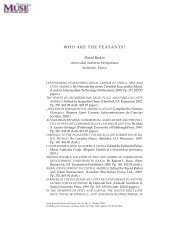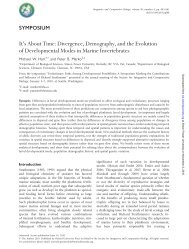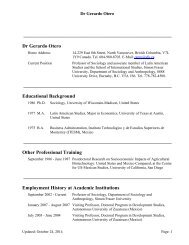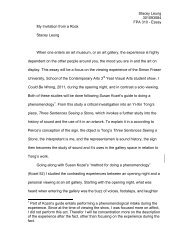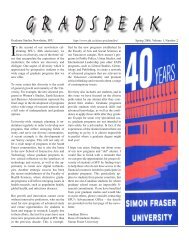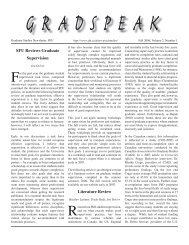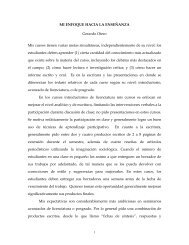Lexicon-Based Methods for Sentiment Analysis - Simon Fraser ...
Lexicon-Based Methods for Sentiment Analysis - Simon Fraser ...
Lexicon-Based Methods for Sentiment Analysis - Simon Fraser ...
You also want an ePaper? Increase the reach of your titles
YUMPU automatically turns print PDFs into web optimized ePapers that Google loves.
Computational Linguistics Volume 37, Number 2<br />
Figure 4<br />
Distribution of responses by modifier value. Difference <strong>for</strong> adverbial intensifiers.<br />
Table 8<br />
Distribution percentages <strong>for</strong> the negative/negated positive SO comparison task.<br />
Word −1 −2 −3 −4 −5<br />
SO pos neg neu pos neg neu pos neg neu pos neg neu pos neg neu<br />
1 50 19 32 16 54 30 8 78 14 4 82 14 0 95 5<br />
2 47 32 21 11 66 23 7 67 27 8 72 20 4 86 11<br />
3 39 26 35 17 67 17 10 84 5 3 95 3 0 9 10<br />
4 36 36 29 31 45 23 20 68 12 12 82 5 0 93 7<br />
5 25 45 30 25 58 17 17 61 22 0 95 5 6 72 22<br />
(a result that was duplicated <strong>for</strong> noun negation), concentrated mostly on SO 1 positive<br />
words (which, as we have seen, are sometimes viewed as neutral). This result is not<br />
predicted by either of our models of negation (switch and shift), but it may be somewhat<br />
irrelevant because negated negatives, being essentially a double negative, are fairly rare.<br />
The main use of negation, we have found, is to negate a positive word.<br />
Table 8 shows the distribution percentages <strong>for</strong> the negative/negated positive SO<br />
comparison task. Here, pos refers to the percentage of people who rated the negated<br />
positive word as being stronger, neg refers to the percentage of people who rated<br />
the negative word as being stronger, and neu refers to a judgment of same. Pairwise<br />
agreement across raters on this task was only 51.2%, suggesting that the comparisons<br />
involving negatives are the most difficult of our tasks. 28<br />
As the SO value of the negative word increases, we of course expect that it is judged<br />
stronger, a pattern visible from left to right in Table 8. The more interesting direction<br />
is from top to bottom: If the switch model is correct, we expect increasing judgments<br />
in favor of the (negated) positive word, but if the shift model is correct, we would<br />
see the opposite. The results in Table 8 are not conclusive. There are aspects of the<br />
28 We in fact saw even lower agreement than this after our initial data collection. We investigated the low<br />
agreement, and attributed it to a single Turker (identified by his/her ID) who exhibited below-chance<br />
agreement with other Turkers. A visual inspection of the data also indicated that this Turker, who<br />
provided more responses than any other, either did not understand the task, or was deliberately<br />
sabotaging our results. We removed this Turker’s data, and solicited a new set of responses.<br />
292


